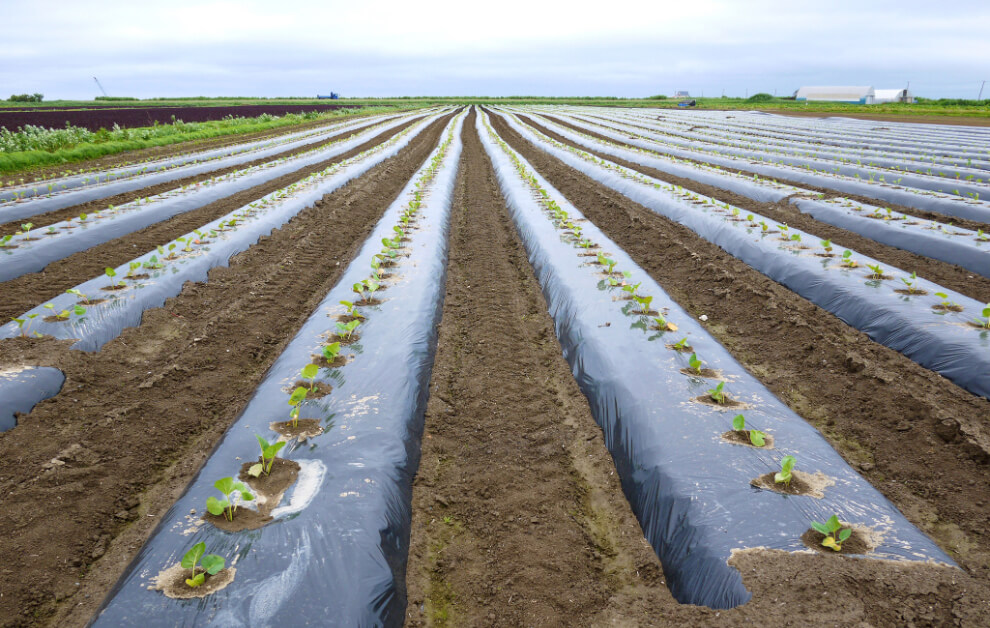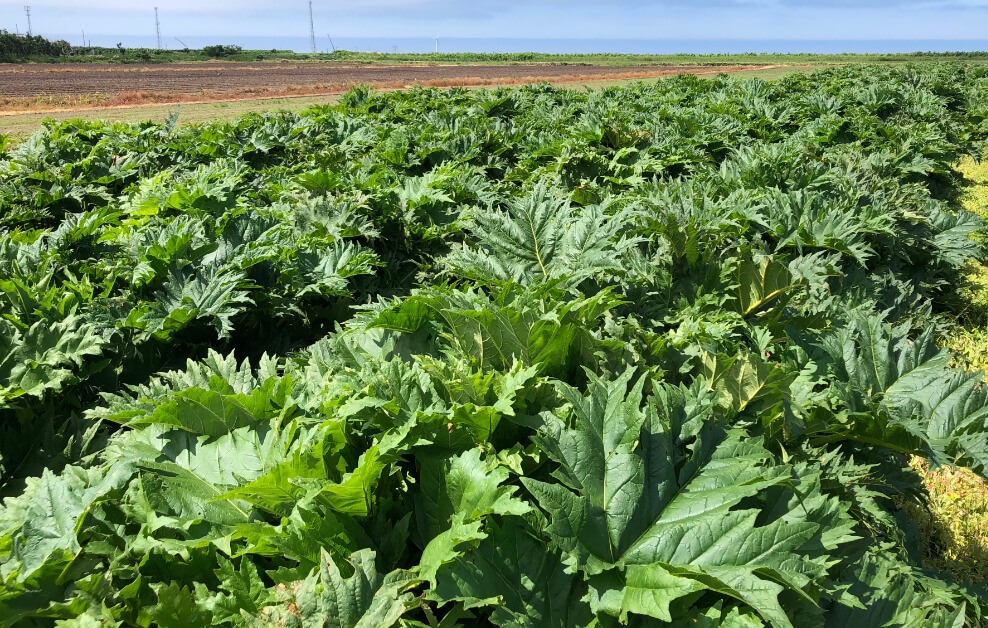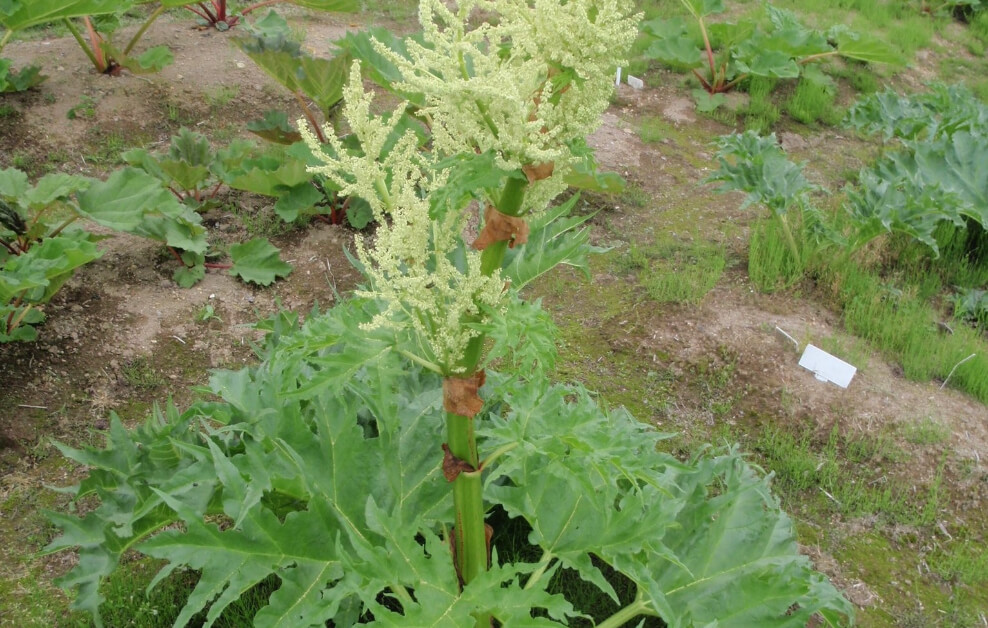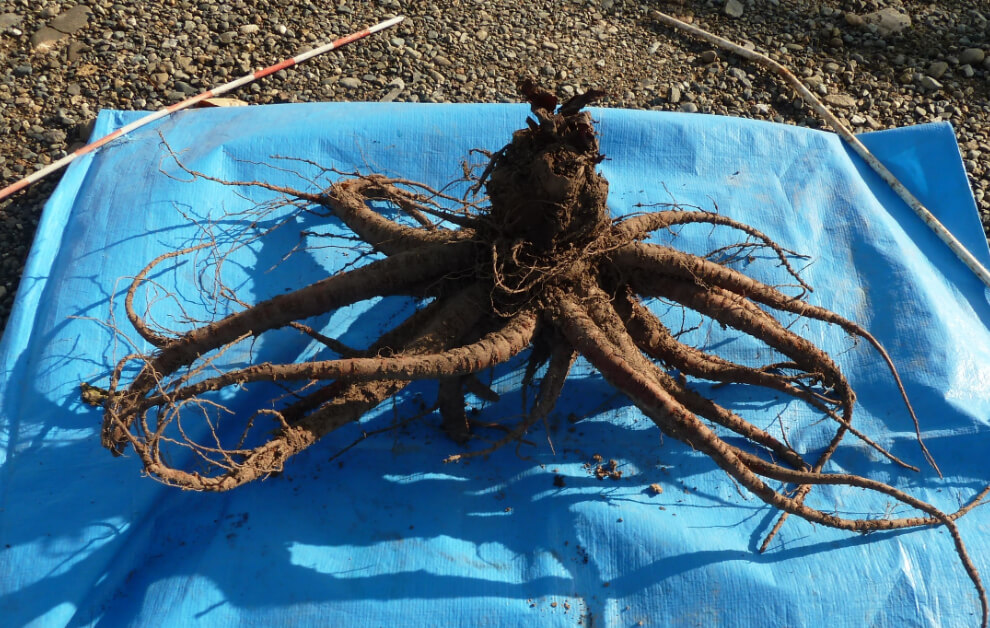initiatives
Main cultivation segmentsRhubarb
- Home
- initiatives
- Sustainability
- Rhubarb
Rhubarb (Hokkaido)
The rhizome and root, which reside underground, are used. These contain sennosides, which have laxative properties, and, therefore, are used in many kampo formulations. Its native habitat is the highlands of China, at 2,000-4,000 m elevation. Both wild and cultivated species are in circulation, but the wild species is endangered. The majority of domestic consumption is from imports from China. High content rhubarb is generally wild, making procurement of this ingredient increasingly difficult in recent years. To that end, since 2012, we have sought to ensure a stable supply of high rhubarb content materials, and entered into a joint cultivation project with a local partner firm in Hokkaido Prefecture, which has a climate similar to that of rhubarb’s own native habitat.
The nature of the local soil prevents cultivating certain crops, but rhubarb is a perfect match that grows exceedingly well. As a result, this has led to reuse of local fallow land and a wider variety of crops to produce. In Hokkaido Prefecture’s increasingly depopulated regions, cultivation of rhubarb is growing, contributing to the local economy.
-

The landscape after planting -

A view of the actively growing fields -

Above ground portion when flowering -

Underground portion after being harvested
